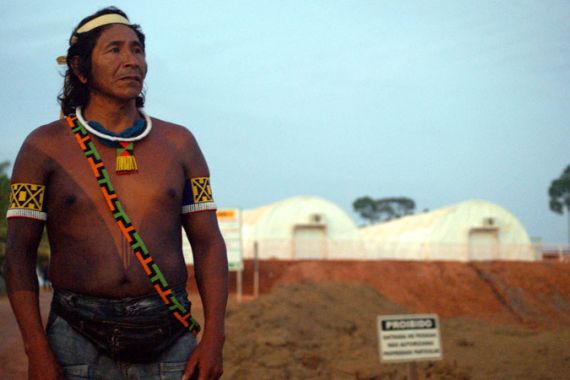
The real cost of Brazil’s dam
Should a country’s energy needs outweigh the social and ecological impacts of projects like the Belo Monte dam?
Construction is now under way in Brazil on the world’s third-largest dam project, potentially displacing 24,000 people.
|
“The dam didn’t pass the first environmental impact assessment that was done and many officials and people close to the administration at local levels have charged the government with ousting the people within its own environmental and indigenous agencies for not putting the rubber stamp on the assessment. Also, most studies of these large infrastructure projects show that they cost at least twice the government’s projected cost.” – Eve Bratman, an assistant professor at the American University |
Plans for the multi-billion dollar Belo Monte dam project on the Xingu River in northern Brazil have long been controversial.
Keep reading
list of 4 itemsTurtles swimming to extinction in Malaysia as male hatchlings feel heat
Could shipping containers be the answer to Ghana’s housing crisis?
Thousands protest against over-tourism in Spain’s Canary Islands
Once complete, the 11,000-megawatt dam is supposed to provide a source of clean energy for Brazil’s growing needs.
But critics say it will only help local industries and not the general population, with some claiming that it will be one of the most inefficient hydropower projects in the country’s history.
Until a few months ago, the future of the Belo Monte dam seemed in doubt. The project faced a wave of legal battles and opposition from indigenous groups and environmental organisations around the world.
About 400 square kilometres of the Amazon forest will be flooded to make way for the reservoirs.
The dam is being built in Brazil’s northern Para state, home to large parts of the Amazon Rainforest.
Some 25,000 indigenous people live along the banks of the Xingu River.
One indigenous group – the Paquicamba – live downstream from the main dam. If the dam is built, the normal flow of the river would shrink significantly. The Paquicamba say their fish stocks would be severely depleted.
|
“It’s very hard to tell if the government is acting in bad faith. There are many concerns in the government regarding sovereignty in the Amazon and so on, but the main appeal to the Brazilian government is the amount of energy at low cost compared with thermal, hydro, nuclear, solar or even wind power, which are still more expensive than hydro power.” – Emelio La Rovere, an environmental consultant |
Environmentalists also point to the loss of biodiversity in the region and the risk of extinction of hundreds of species of fish in the Xingu River.
But it is the social implications on the local population that frequently makes the headlines. About 24,000 people are expected to be displaced to make way for the construction.
The consortium behind the project says the environmental impact will be minimal.
So, should a country’s economic development and energy needs outweigh the social and ecological impacts of big infrastructure projects like that of the Belo Monte dam?
Inside Story Americas, with presenter Anand Naidoo, discusses with guests: Eve Bratman, an assistant professor at the American University; Emelio La Rovere, an environmental consultant; and Ken Green, a specialist in energy and environment at the American Enterprise Institute.
|
“Developed societies are energy societies to the extent that we empower individuals, literally, giving them access to greater amounts of power. We give more options, more opportunities, more ability to be productive and therefore amass health and wealth. We also have to follow procedures to ensure that people’s rights are respected, that the environmental impacts are accounted for and worked into the process.” Ken Green, an energy and environmental specialist |